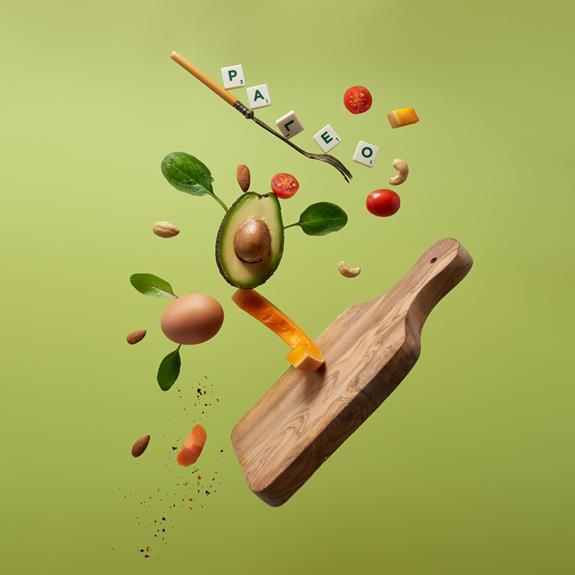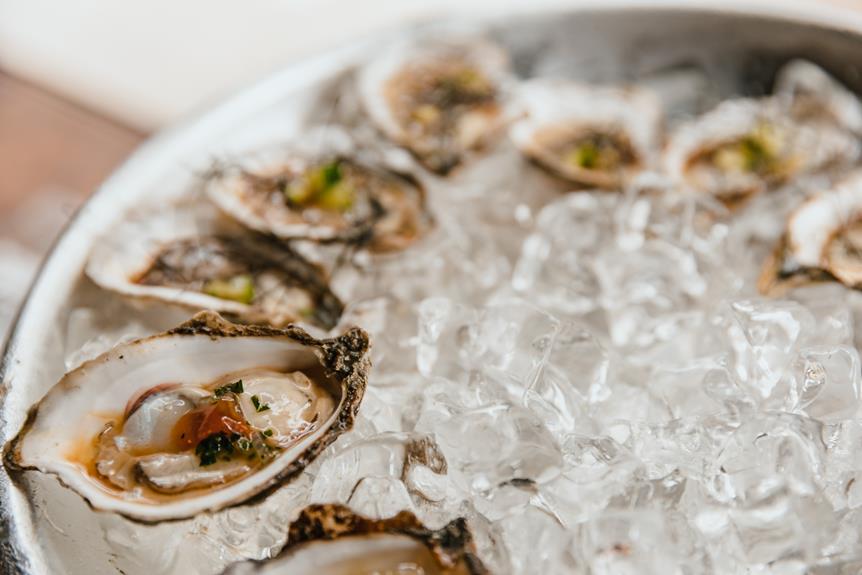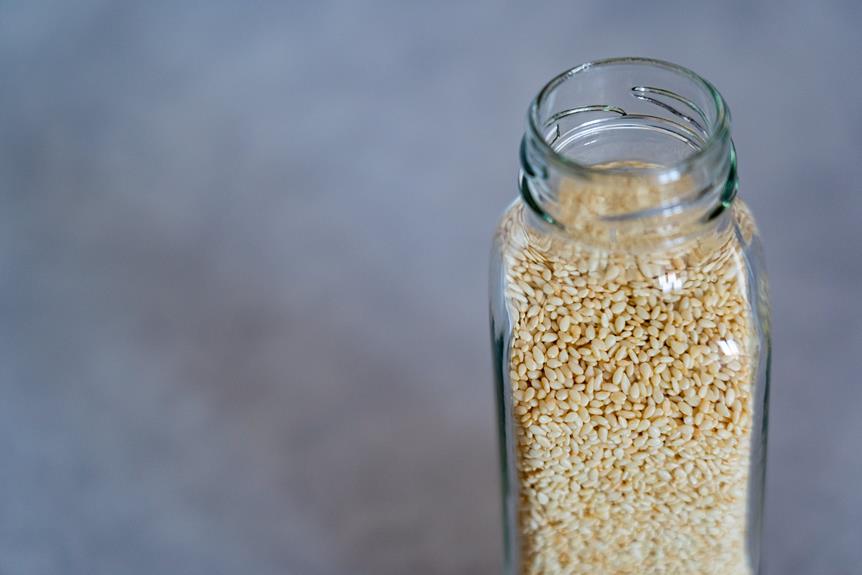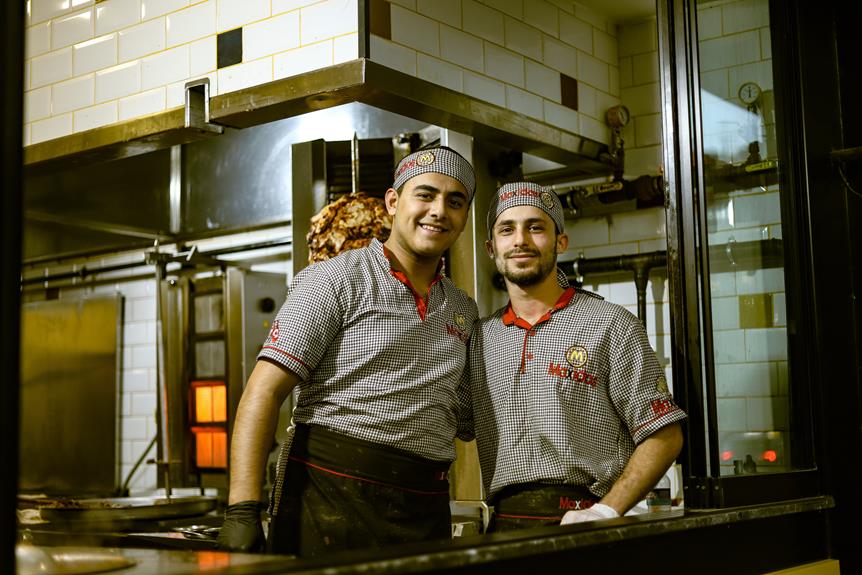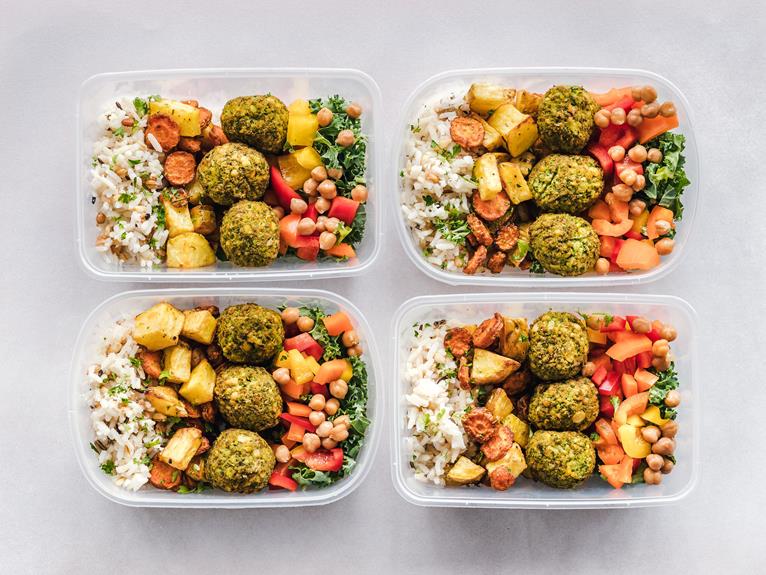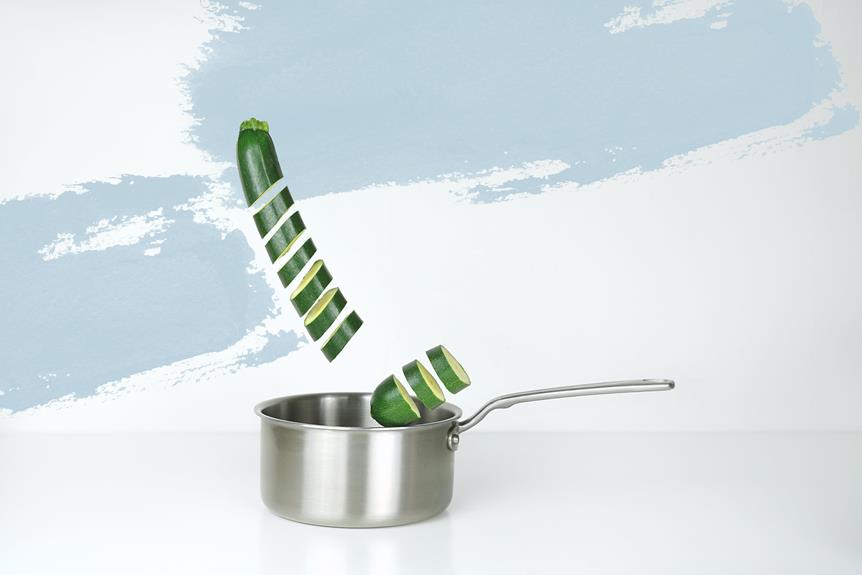Embracing a Paleo diet can be a transformative journey towards better health and well-being. At the heart of this dietary approach lies the consumption of nutrient-dense, unprocessed foods that are believed to support optimal physical and metabolic function.
As such, effective meal planning for a Paleo diet involves strategic selection of ingredients and thoughtful organization of meals to align with the principles of this ancient-inspired eating pattern.
From sourcing high-quality proteins to incorporating a rainbow of fruits and vegetables, mastering the art of Paleo meal planning can unlock a world of delicious, satisfying, and nourishing culinary experiences.
Paleo Diet Basics
The Paleo diet, also known as the Paleolithic diet, is based on the idea of eating foods that our ancestors consumed during the Paleolithic era. The main principle of the Paleo diet is to eat whole, unprocessed foods that are rich in nutrients and avoid processed and refined foods.
This means cutting out grains, legumes, dairy products, and processed sugars from your diet. Instead, focus on lean meats, fish, fruits, vegetables, nuts, and seeds.
Meal planning within the Paleo diet restrictions offers a variety of options. For breakfast, you can have scrambled eggs cooked in coconut oil, served with avocado, and a side of mixed berries.
Lunch can be a salad made with grilled chicken, mixed greens, cherry tomatoes, cucumber, and homemade olive oil and lemon dressing. Dinner can consist of grilled salmon served with roasted sweet potatoes and steamed broccoli.
Snack options include carrot sticks with almond butter, celery with guacamole, or a handful of mixed nuts.

Benefits of Meal Planning
Meal planning is a valuable tool for maximizing the benefits of the Paleo diet. It can save you time and reduce stress by eliminating the daily decision-making process of what to cook.
With a well-thought-out meal plan, you can ensure you have all the necessary ingredients on hand and even prepare meals in advance. This not only saves time during the busy week but also helps you stay on track with your Paleo diet goals.
Meal planning is especially beneficial for picky eaters. By planning your meals, you can incorporate foods you enjoy and avoid feeling restricted by the Paleo diet. You can experiment with different recipes and find ways to make them more appealing to your taste buds.
In addition to saving time and catering to personal preferences, meal planning helps you stay organized and reduces food waste. By having a clear plan for your meals, you can create a shopping list and only buy the necessary ingredients. This eliminates the need for last-minute grocery runs and prevents ingredients from going bad in your fridge.
Essential Pantry Staples
To have a successful meal plan on a Paleo diet, it’s important to stock your pantry with the right ingredients. Start by having high-quality fats and oils on hand, such as coconut oil, olive oil, and avocado oil. These healthy fats are essential for cooking and baking, and they also offer numerous health benefits.
Next, make sure to keep a variety of nuts and seeds in your pantry. Almonds, walnuts, chia seeds, and flaxseeds are great options. You can use them for snacking, as toppings for salads or smoothies, or as ingredients in Paleo-friendly recipes.
Having a selection of dried herbs and spices is also important. They add flavor to your meals without the need for processed condiments or sauces. Feel free to experiment with different combinations to find your favorite flavors.
To help with meal planning, consider using meal planning apps. These apps can provide recipe ideas, generate shopping lists, and even offer nutritional information for your meals. They’re a great tool to stay organized and on track with your Paleo meal plans.
Weekly Meal Planning Tips
When planning your meals for the week, it’s important to be organized and strategic. Weekly meal prep can save you time and make sticking to your Paleo diet easier. Here are some time-saving strategies to help you plan your meals efficiently:
- Plan your meals: Take some time at the beginning of the week to plan out your meals. Look for recipes that can be made in bulk and will last for multiple days. This will save you from having to cook every single day.
- Prep ingredients in advance: Spend some time on the weekend chopping vegetables, marinating meats, or cooking grains. By prepping ingredients ahead of time, you can cut down on cooking time during the week.
- Use leftovers creatively: Don’t be afraid to repurpose leftovers into new meals. For example, use leftover roasted chicken to make a delicious salad or wrap for lunch the next day.
- Take advantage of slow cookers or Instant Pots: These kitchen appliances are a meal prepper’s best friend. You can throw in all the ingredients in the morning and come back home to a delicious and ready-to-eat meal in the evening.
Quick and Easy Paleo Recipes
If you’re looking for quick and easy Paleo recipes, you’re in luck! Whether you’re new to the Paleo lifestyle or a seasoned follower, having a variety of delicious and convenient recipes on hand is essential for staying on track with your diet goals.
When it comes to meal planning for beginners, it’s important to find recipes that aren’t only nutritious but also simple to prepare.
To ensure you have quick and easy Paleo snacks, keep your pantry stocked with Paleo-friendly ingredients. Nuts, seeds, and dried fruits are great grab-and-go options that are both satisfying and nutritious. You can also make homemade energy balls or create your trail mix using your favorite Paleo-approved ingredients.
For quick and easy Paleo meals, choose recipes that require minimal ingredients and preparation time. For breakfast, make a veggie-packed omelet or a simple fruit and nut smoothie.
For lunch or dinner, go for grilled chicken or fish with roasted vegetables on the side. Stir-fries and salads are also excellent choices as they can be customized with your favorite protein and vegetables.
Batch Cooking for Efficiency
To make meal planning for a Paleo diet more efficient, consider incorporating batch cooking into your routine. Batch cooking involves preparing a large amount of food in advance, saving you time and effort throughout the week. Here are some tips to help you with batch cooking for your Paleo diet:
- Plan your meals: Before you start batch cooking, create a meal plan for the week. This will help you determine the ingredients you need and how much food to prepare.
- Choose versatile recipes: Opt for recipes that can be easily adapted into different meals. For example, you can cook a large batch of grilled chicken breasts and use them in salads, stir-fries, or as a protein source for your meals.
- Invest in quality storage containers: To keep your batch-cooked meals fresh, invest in airtight containers that are freezer and microwave-safe. This will allow you to store your meals properly and easily reheat them when needed.
- Schedule a batch cooking day: Set aside one day each week dedicated to batch cooking. This will help you stay organized and ensure that you have enough food prepared for the week ahead.
Meal Prep Containers and Tools
When it comes to storing and organizing your batch-cooked meals, it’s important to have high-quality meal prep containers and tools.
Investing in the right containers will make your life easier and help you stay on track with your Paleo diet. Look for BPA-free containers with multiple compartments to keep your food separate and prevent cross-contamination. This will ensure that your meals stay fresh for longer.
Meal prep tools are also essential for making the process smooth and efficient. A good set of measuring cups and spoons will ensure accurate portion sizes, while a food scale can help you track your macros. Other useful tools include a sharp chef’s knife, a cutting board, and a blender for making smoothies and soups.
Planning for Breakfast and Lunch
Start your day off right with a satisfying and nutritious Paleo breakfast and plan for a delicious and balanced lunch. Here are some ideas to help you stay on track with your Paleo diet:
- Breakfast:
- Make a veggie-packed omelet using eggs, spinach, bell peppers, and mushrooms. Top it off with avocado slices for a creamy twist.
- Blend a refreshing smoothie with coconut milk, frozen berries, and a scoop of almond butter for added protein.
- Keep it simple and satisfying with a plate of smoked salmon, sliced cucumbers, and mixed greens.
- Spice up your morning with a hearty sweet potato hash cooked with onions, bacon, and a sprinkle of paprika.
- Lunch:
- Prepare a colorful salad with grilled chicken, mixed greens, cherry tomatoes, and a drizzle of olive oil and lemon juice.
- Wrap your favorite fillings in lettuce wraps instead of bread, using lean turkey or chicken, avocado, and crunchy veggies.
- Make a big batch of vegetable stir-fry using a variety of colorful veggies like broccoli, bell peppers, and carrots. Add in some protein like shrimp or chicken for a complete meal.
- Enjoy a comforting bowl of beef chili made with grass-fed beef, tomatoes, beans, and spices. Serve it with a side of roasted sweet potatoes for added flavor.
With these breakfast ideas and lunch recipes, you’ll have delicious and nutritious meals that will keep you satisfied and energized throughout the day.
Smart Snacking Options
When it comes to snacking on a Paleo diet, it’s important to choose nutrient-dense foods that will keep you satisfied between meals. Opt for delicious options that are also paleo-friendly.
Here are some smart snacking ideas to consider:
- Fresh fruits and vegetables: These provide vitamins, minerals, and fiber, keeping you full and energized. Enjoy apple slices with almond butter or carrot sticks with guacamole.
- Nuts and seeds: Packed with healthy fats and protein, nuts and seeds are a crunchy and satisfying snack. Try almonds, cashews, or pumpkin seeds.
- Hard-boiled eggs: Eggs are a great source of protein and can be easily prepared in advance. They make for a quick and convenient snack.
In addition to these options, there are also paleo-friendly desserts that can satisfy your sweet tooth without derailing your diet. Consider making homemade paleo chocolate avocado mousse or coconut milk chia pudding. These desserts are made with natural ingredients and are free from refined sugars.
Building Nutrient-Dense Meals
To maintain a balanced and healthy eating plan on a Paleo diet, it’s important to choose a variety of nutrient-rich foods. Here are four tips to help you maximize the nutritional value of your meals:
- Fill your plate with colorful vegetables: Including a wide range of vegetables in your meals ensures you get a diverse array of vitamins, minerals, and antioxidants. Think of leafy greens, cruciferous vegetables, and vibrant bell peppers.
- Include quality protein sources: Opt for lean meats like chicken, turkey, and fish, as well as grass-fed beef and eggs. These protein sources provide essential amino acids and can help keep you feeling satisfied throughout the day.
- Add healthy fats: Incorporate foods rich in healthy fats, such as avocados, nuts, and seeds. These fats provide energy, support brain health, and help absorb fat-soluble vitamins.
- Don’t forget about nutrient-dense snacks: Include nutrient-dense snacks like hard-boiled eggs, mixed nuts, or fresh fruit in your meal plan. These snacks not only provide additional nutrients but also help curb cravings.
Budget-Friendly Paleo Meal Planning
Save money while following a Paleo diet by using budget-friendly meal planning strategies. Eating healthy doesn’t have to be expensive. With a little planning and smart shopping, you can enjoy nutritious Paleo meals without overspending.
To save on groceries, do budget-friendly meal prep. Take time each week to plan your meals. This will help you avoid impulse purchases and ensure you only buy what you need. Look for sales and discounts on Paleo-friendly ingredients and stock up when prices are low. Buying in bulk can also save you money in the long run.
Focus on affordable Paleo staples to save even more. Eggs, chicken thighs, ground beef, and seasonal vegetables are budget-friendly options. Get creative with flavors and ingredients to keep meals interesting without breaking the bank.
Don’t forget about leftovers. Plan meals that allow for leftovers, which can be repurposed into new dishes or enjoyed as quick lunches the next day. This stretches your budget and reduces food waste.
Paleo Meal Planning for Families
Successful paleo meal planning for families involves incorporating a variety of nutritious and budget-friendly options. When planning meals for picky eaters, it can be challenging to find dishes that everyone will enjoy. However, with a little creativity and flexibility, you can create meals that satisfy even the most finicky taste buds.
Here are four tips to help you incorporate paleo meals into a busy schedule:
- Involve your family in the meal planning process: By including your family in the decision-making, you can ensure that everyone’s preferences are considered. This will help picky eaters feel more included and more willing to try new dishes.
- Make simple swaps: If your family has specific dietary restrictions or preferences, make easy substitutions to accommodate their needs. For example, if someone doesn’t like cauliflower rice, try using zucchini noodles or sweet potato fries instead.
- Prep ahead of time: To make your life easier, take some time to meal prep on the weekends. Chop vegetables, marinate meats, and pre-cook certain ingredients. This way, when you’re short on time during the week, you can simply assemble and cook your meals.
- Get creative with flavors: Experiment with different herbs, spices, and sauces to add variety and excitement to your meals. This will help keep the whole family interested and more willing to try new dishes.
Meal Planning for Weight Loss
When it comes to reaching your weight loss goals, meal planning is essential for making healthier choices and staying on track with your nutrition. Planning your meals provides structure and support, making it easier to stick to your weight loss plan.
Here are some practical tips and strategies to incorporate into your meal-planning routine.
Focus on creating balanced meals that include a variety of nutrient-rich foods. Include lean proteins such as chicken, fish, and tofu, along with plenty of vegetables and small amounts of healthy fats. This will help you feel satisfied and maintain stable energy levels throughout the day.
Be mindful of portion sizes. It’s easy to overeat, especially when trying to lose weight. Use smaller plates and bowls to control your portion sizes and avoid going back for seconds. You can also measure your food or use portion-control containers to ensure you’re eating the right amount.
Lastly, plan your meals and snacks ahead of time. This will help you avoid impulsive and unhealthy food choices. Take a little time each week to create a meal plan and grocery list. Preparing your meals in advance can save you time and prevent you from reaching for unhealthy options when you’re hungry and pressed for time.
Tips for Staying on Track With Paleo
Stay motivated on your Paleo journey by surrounding yourself with a supportive community of like-minded individuals. Join online forums or local groups that share your passion for the Paleo lifestyle. Remember why you started this diet and visualize the benefits you’ll gain from sticking to it.
Plan your meals ahead of time to ensure you have healthy, Paleo-friendly options readily available. This will prevent you from making unhealthy choices when hunger strikes. Take some time each week to plan and prepare your meals.
Don’t let dining out derail your Paleo progress. Research Paleo-friendly restaurants or look for menu options that align with your diet. Most restaurants are willing to accommodate dietary needs, so don’t hesitate to ask for modifications or substitutions. If you’re unsure, choose grilled meats or fish with a side of vegetables.
Keep track of your progress by using a food diary or smartphone app. This will help you stay accountable and make adjustments if needed. Logging your meals and tracking your macros can be a great source of motivation.
Conclusion
Meal planning for a paleo diet offers several benefits for your health and budget, while also helping you achieve your weight loss goals.
By stocking up on essential pantry items and following weekly meal planning tips, you can easily create quick and simple paleo recipes.
Planning your meals is crucial for success, so start meal planning today and enjoy the nourishing and delicious lifestyle that comes with a paleo diet.

